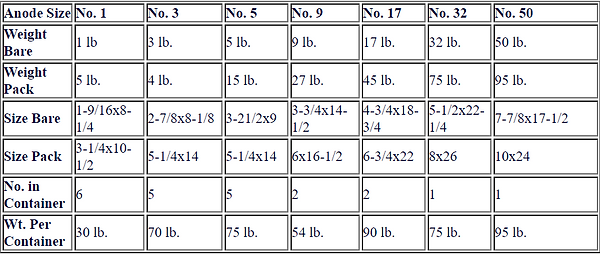top of page


Corrosion Prevention Packages
Steel waste water treatment systems are routinely protected by coding supplemented with cathodic protection, which is an impressed current cathodic protection system (ICCP) for a treatment system that consists of several magnesium anodes buried in the ground adjacent to the tank structure. Cathodic protection is used to mitigate corrosion damage to active metal surfaces, and is used all over the globe to protect pipelines, Water treatment plants, waste water treatment systems, and more. Cathodic protection is also used to protect steel fabrication material used in manufacturing your system from corrosion.
Corrosion is caused when two similar metals are connected in an electrolytic substance such as water, soil, or concrete. This type of metal conducting path between the two dissimilar Metals allows a pathway through which free electrons move from the more active metal (anode) to the less active steel tankage (cathode). It free electrons from the anode do not reach active sites on the cathode before the arrival of oxygen, ions at the active site can then recombine to produce Ferrous hydroxide, (i.e. Rust) which can cause your tankage to fail. This is why anodes are provided for your system. The anodes in most cases will last about five years, therefore needs to be replaced at that time. WWD stocks these replacement anodes.
What is Corrosion?
How Can Corrosion Be Prevented?
Magnesium Anode Package

To minimize corrosion from various soil conditions, sacrificial magnesium anodes are buried in the ground surrounding below grade systems. The anode is attached to the system with a copper wire. During the construction, proper installation of the anodes is critical. Allowing enough slack in the copper wire so that it will not break during backfilling is important. Cathodic Protection with magnesium anode packages is supplied with all below ground installations of all prefabricated steel systems. Cathodic corrosion protection shall be provided using magnesium anodes, normally weighing between 9 and 17 pounds each. These shall be buried by the contractor adjacent to the tank sides and provided with good electrical contact with the tank. The anodes shall come packed in its own low resistant bag filled with material for moisture control. The copper lead wire brazed to the core and insulated with coal tar at that point. The anodes shall be attached to the tank vessel at the connection provided near the top or bottom of the tank, depending on the project requirement. Anodes should be tested and replaced approximately every 5-7 years.
Sizing

bottom of page